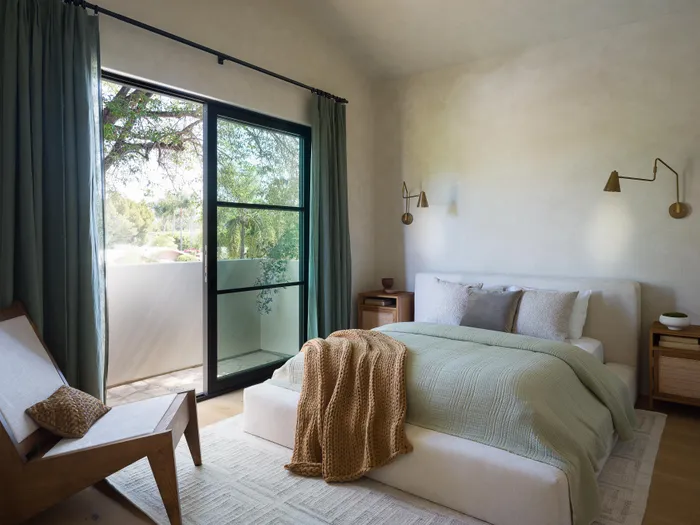Your guide to buying property: tips for first-time buyers

Discover the challenges and opportunities for first-time homebuyers in the Western Cape. With insights from industry experts, learn about affordable areas, creative strategies, and the growing appeal of the region for both local and international buyers.
Image: Todd Goodman
The Western Cape continues to be one of South Africa’s most desirable regions for property investment, luring interest from both local and international buyers. Yet for many first-time homebuyers—especially those eyeing Cape Town—the dream of homeownership can feel increasingly out of reach.
According to ooba Home Loans’ latest oobarometer, the average purchase price in the Western Cape during Q1 2025 stood at a staggering R2.33 million, significantly above the national average of R1.66 million. Nevertheless, activity among entry-level buyers has not waned—proof that creative solutions and alternative strategies are helping many take that important first step onto the property ladder.
“We’re seeing many young professionals and investors gravitating towards the Western Cape for its lifestyle, infrastructure, and perceived safety, but affordability in the metro remains a challenge, especially for those trying to enter the market for the first time,” explains Grant Smee, CEO of Only Realty Property Group.
Despite the province’s high price point, Lightstone data shows that 40% of housing stock in the Western Cape is priced under R750,000. However, most of these properties are concentrated in smaller towns and rural areas.
“Investment properties are also in high demand, with the Western Cape recording a year-on-year increase of 0.5% to reach 12.9% in the first quarter [ooba Home Loans]. There is a growing trend of first-time homebuyers purchasing in the Boland and Overberg regions in smaller, outlying towns,” says Smee. “These areas offer a more balanced lifestyle and slightly more accessible pricing, while still benefiting from the broader Western Cape infrastructure.”
Within Cape Town, many new buyers are opting for micro-apartments and sectional title units in high-density, mixed-use developments.
“These offer security and lifestyle perks like on-site retail, communal workspaces, and gyms,” Smee adds.
The province’s magnetic global appeal hasn’t gone unnoticed. While the local market wrestles with affordability, foreign investors are entering at the higher end.
“According to Lightstone data, the province leads in luxury price bands, with international homebuyers accounting for over 40% of purchases above R10 million, around 25% in the R5 to R10 million range and approximately 15% in the R3 to R5 million bracket,” says Smee.
“Compared to global cities, the Western Cape offers strong value. For instance, the average price of a home in one of the region’s upmarket suburbs sells for around R10 million. To purchase an apartment in London, with considerably less living space, homebuyers will pay upwards of R12 million.”
This sentiment is echoed internationally. The Australian Property Investor recently reported that South Africans pay around R17,000 per square metre for a median-priced home, compared to R113,000 in Australia.
While Cape Town remains a prime property hotspot, buyers are expanding their search.
“The Western Cape’s so-called ‘Zoom’ towns – so-called for their remote working appeal – include Pringle Bay, Betty’s Bay, Kleinmond, Malmesbury, Hermanus, and Gansbaai,” says Smee. “These areas provide easier entry points for buyers and remain within comfortable reach of Cape Town.”
Beyond the Western Cape, other provinces offer compelling options.
“Mpumalanga, for instance, is currently leading the pack when it comes to home loan applications from first-time buyers [ooba Home Loans]. Nelspruit, in particular, is booming with new estate developments that offer a secure, lock-up-and-go lifestyle, community atmosphere, and budget-friendly pricing.”
Gauteng continues to draw buyers seeking well-established infrastructure.
“Popular nodes like Waterfall, Bryanston, and Hyde Park are drawing interest from buyers seeking well-established infrastructure and upscale living,” Smee adds.
KwaZulu-Natal's North Coast has emerged as an investment beacon.
“Over the past decade, this region has experienced massive growth, with estate developments, excellent schools, security, and community-driven living making it an increasingly worthwhile investment.”
The Eastern Cape is also gaining ground, with towns like Jeffreys Bay and Kenton-on-Sea growing in popularity among short-term rental investors.
“These regions combine access to economic centres with a strong lifestyle appeal, without the Cape Town price tag,” Smee explains. “For buyers willing to expand their horizons beyond the Western Cape, there are standout opportunities, many in secure estates or fast-growing nodes. And with many of these areas doubling as holiday destinations, they open the door to ‘rentvestment’ opportunities, whether for short-term letting or longer-term leasing.”
Smee advises that while buying in the Western Cape might require more strategy and patience, the long-term rewards make it worthwhile.
“For homebuyers determined to get a foothold in the Western Cape property market, there are many options available. This investment is well worth it too as the average growth of property in the province is around 7.4%.”
Top tips include:
- Enter into a joint home loan: Co-buying with a friend, partner or sibling can boost affordability and borrowing power.
- Save smart and plan long-term: Set clear savings goals and budget realistically for transfer and attorney fees.
- Start on the outskirts: Neighbourhoods just outside key metro areas often offer more accessible prices and are poised for growth.
- Buy a fixer-upper: Properties in need of a bit of work can often be negotiated at lower prices and renovated over time.
- Buy-to-let as a stepping stone: Purchase an investment property in a growing node while renting where you live.
“The Western Cape is a great place to invest, but it could require a bit more creativity and long-term thinking for first-time homebuyers to make it work. Alternatively, if the Western Cape doesn’t meet your criteria, regions like the Eastern Cape, KwaZulu-Natal, and Mpumalanga have potential. It’s not about compromising your goals, but rather being strategic,” says Smee.
PERSONAL FINANCE